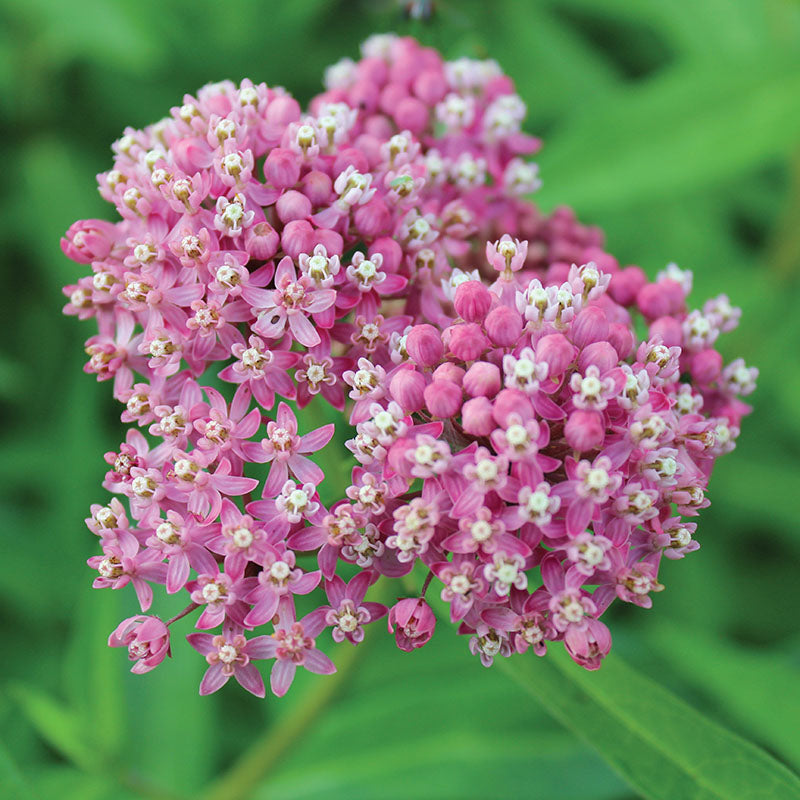Soulmate Milkweed Plants
Milkweed Soulmate is not only soul food to Monarch caterpillars and butterflies, (and all their pollen-loving buddies), but they smell like vanilla, have dense, dynamic foliage, and grow little clip-and-go bouquets of tiny pink flowers that look likewee hearts. They grow tall and spread over the years, so give them the space they need to do their thing. They start slow but once they catch their stride, they take off. One day you'll look over and think, "hot dang, those things got huge".
Milkweed, strong yet humble, native to North America, is the essential food of Monarch Butterflies. Milkweed provides sanctuary for bugs and birds that do the good work of pollinating plant life, and endearing flowers born on unique foliage that fits right in to every garden, no matter what your style.
Includes three young plants, grown in 2.5" diameter pots.
| Botanical Name
|
Asclepias incarnata
|
| Sun
|
Full sun, or part shade |
| Height
|
4ft when full grown |
| Spacing
|
18-24" between plants
|
| Light
|
Full sun or part shade
|
| Zone
|
Grows everywhere in the USA (perennial, zones 4-9, annual in other zones)
|
| Deer
|
Deer resistant |
| Kids & Pets
|
Toxic |
| Climate
|
Grows everywhere |
| Water
|
Prefers even moisture |
| Indoor & Pots
|
In ground or large container |
 How to Plant How to Plant |
Dig a hole twice the size of the root ball. Fill a little bit of the loose dirt back into the hole and tuck your plant in so the base of the stem is even with the top of the hole. Now fill in the rest of the soil around the roots, give the soft ground around the base of your new plant friend a few solid pats to compress the soil onto the roots, and a long, gentle drink of water |
 Where to Plant Where to Plant |
Find a place that mostly sun, in well draining soil |
 When to Plant When to Plant |
Avoid the heat of the day when planting — plant in the early morning, late afternoon, or by the light of the moon. Plant outside after your average last frost in the spring |
 When to Expect Blooms When to Expect Blooms |
Blooms from early summer through fall |
 Care Instructions Care Instructions |
Water regularly. Will self sow, so be sure to plant where spreading is welcome |
 Extra Credit Extra Credit |
Native to North America. Leaves turn a brilliant yellow in the fall |
Couldn't load pickup availability















